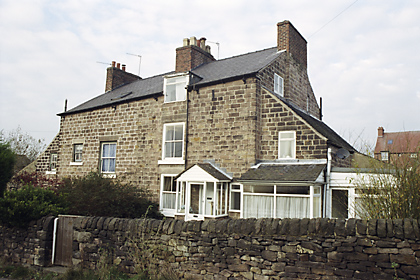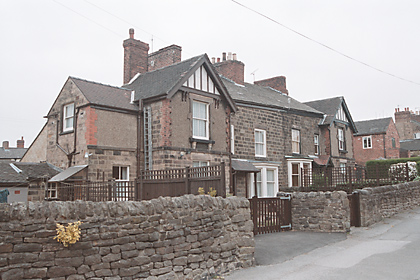Source: Wikipedia
Bage might also be credited with the invention of the ‘quadruple’ or ‘cluster’ house, and the first of these houses were built for overseers at the Flax Mill in Shrewsbury. Though these no longer survive, we still have examples in Belper, Amber Valley in Derbyshire, England which were built about 1803 by William Strutt in co-operation with Bage. In this plan, one block divided north-south and east-west to form 4 back to back houses. Each block sited in the center of a large plot so that the northern 2 houses in each block are on one street and those to the south on another. Eight blocks were originally envisaged but only 5 actually built. They were intended as houses for mill foremen and managerial staff.

These houses in Derbyshire are believed the oldest surviving example of this particular housing type, and were listed in 1979.

Source: Images of England; search 'cluster'; photos by John Lewis, 2004
Related Posts: |
Social Bookmarking
1 comment:
sankra blogspot damaged schwalbe fairclough congress propensity plausibility constructing forsyth leaflet
masimundus semikonecolori
Post a Comment